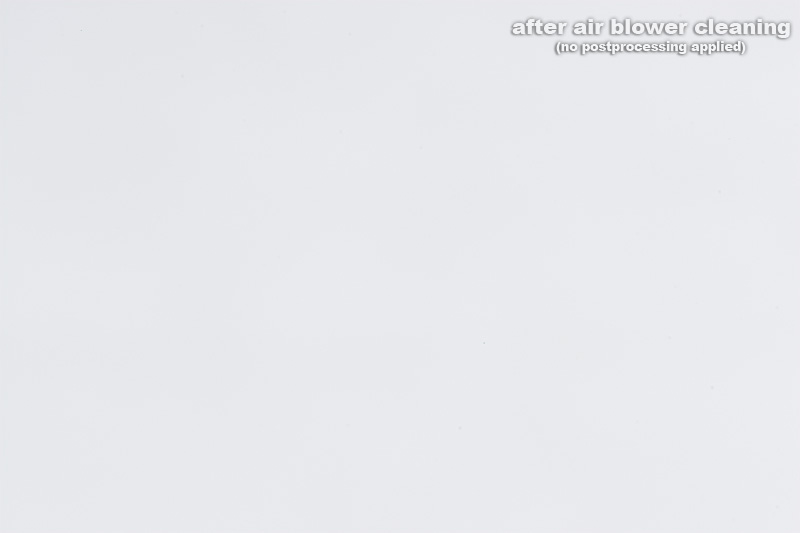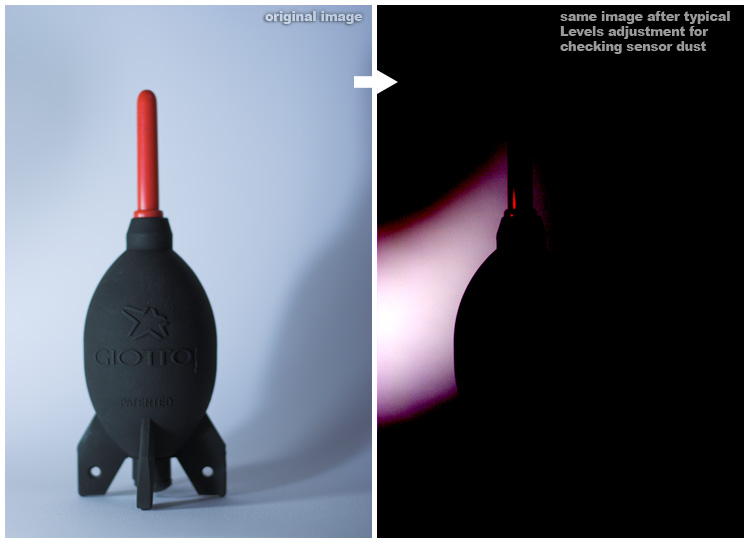





 |
 |
 |
 |
 |
 |
| Arn | profile | all galleries >> tests, samples, misc stuff >> sensor cleaning | tree view | thumbnails | slideshow |
To see how much dust you have on your DSLR's sensor: first, photograph a pale/white, untextured and evenly lit surface (for
example a sheet of paper). Focus to infinity. Set the aperture to as small as you can (for example f/22). Set exposure
compensation to +2.
This is how a sensor can look like after a thorough blower cleaning (without any post processing):





| comment | share |